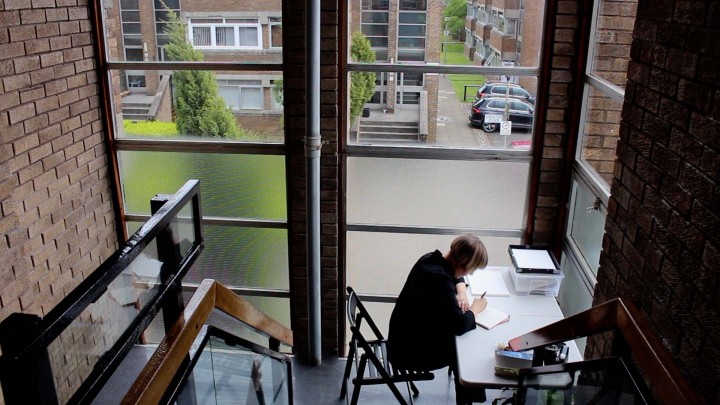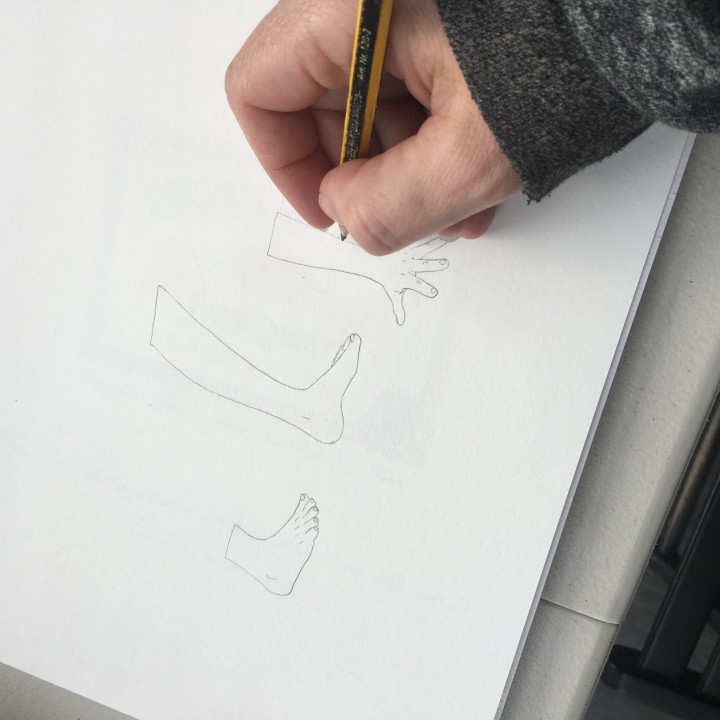Scottish Art News
Latest news
Magazine
News & Press
Publications
Scottish Art Unlocked: Hanna Tuulikki
By Hanna Tuulikki, 10.07.2020

Life as an artist is a precarious path. We're used to ever-shifting horizons, often not knowing what's around the corner. Despite the uncertainty, we hold on to 'making art' because that's how we navigate the world. But when the pandemic hit, it suddenly felt as if there wasn't anything to hold onto, as if trying to manoeuvre across a warped funfair ride, where the floors keep moving.
Like many freelance artists and art workers, I lost much of my income from projects being postponed or cancelled. Becoming increasingly anxious, I watched the death toll rise and the UK Government behaving irresponsibly. For the first time ever, making art felt completely pointless. My mental health plummeted. ABORT! ABORT! I want to get off the ride!
After a few weeks of pyjama living, the first wave of shock (grief?) settled, and things started to feel possible again. Pre-lockdown, I'd been preparing to film a sequence of choreographed movements exploring the Finnish folkloric concept of being caught in metsänpeitto (forest cover) – a landscape where everything is unfamiliar and moves in reverse. With rehearsals and film production on hold, how could I keep this work alive? If not in my body, perhaps I could animate it on paper. Determined to try, I set up a temporary studio in the landing above my flat and, sitting at a desk in the communal stairwell, began to draw the sequence in a choreographic score.
 Hanna Tuulikki drawing in her temporary studio.
Hanna Tuulikki drawing in her temporary studio.
In Finnish folklore, metsänpeitto is used to describe when people go missing in the forest. I'd been thinking about it as a contemporary metaphor for the emotional trauma that comes with ecological awareness. Now, finding ourselves lost in the woods of a pandemic, the work has taken on strange new meaning. Slowly, on the page, a disembodied human form emerged limb by limb, in ink black lines, recalling the instructions said to help someone lost in 'forest cover' find their way. Perhaps it was working with these instructions, perhaps it was the meditative action of making marks on paper; either way, drawing helped me to feel calmer, which meant I could begin to think about practical things again.
Having an archive of old work, I was able to sell music from past projects and artwork through the Artist Support Pledge initiative online. I also received support through Creative Scotland's Bridging Bursary and HMRC's self-employment grant. I'd found ways to survive – to pay the bills and to stop feeling so anxious – and kept reminding myself that this was what I've always done, delicately balancing the act of nurturing my practice with earning enough money to live; that this was resilience.
As we slowly ease our way out of lockdown, I'm starting to think more about the future and how I can continue to work as an artist in a post-COVID world. I know things are going to be tough. But I'm also aware of how this moment in time is an opportunity to collectively rethink how we do things. My hope is that arts organisations will embrace this shift and work closely with artists to reimagine possible futures, navigating what comes next, together.
Hanna Tuulikki is an artist, composer and performer based in Scotland.
This article is part of a series from the Fleming Collection in discussion with the Scottish art scene to find out how the Covid-19 pandemic and subsequent lockdown has impacted programmes and practices, and how it might reshape the art scene in the future. For more, read Kate Gray on Collective and Tina Fiske on CAMPLE LINE.




